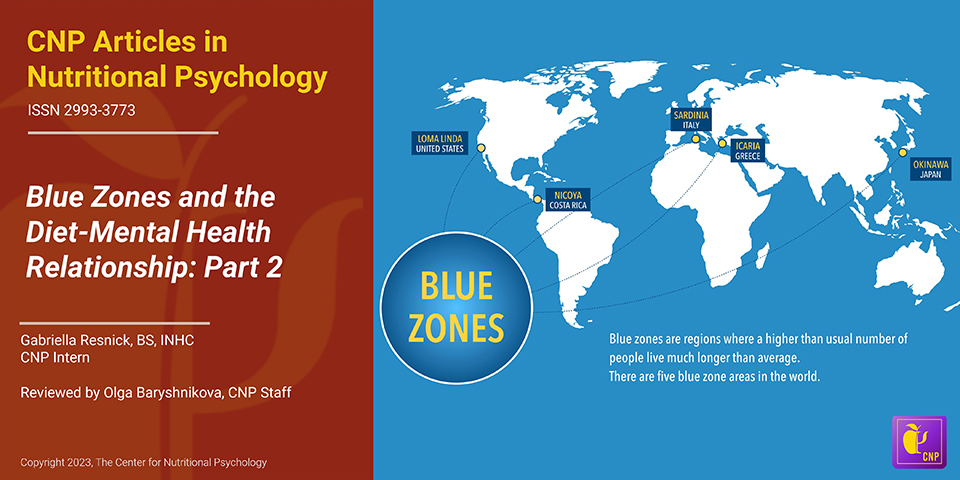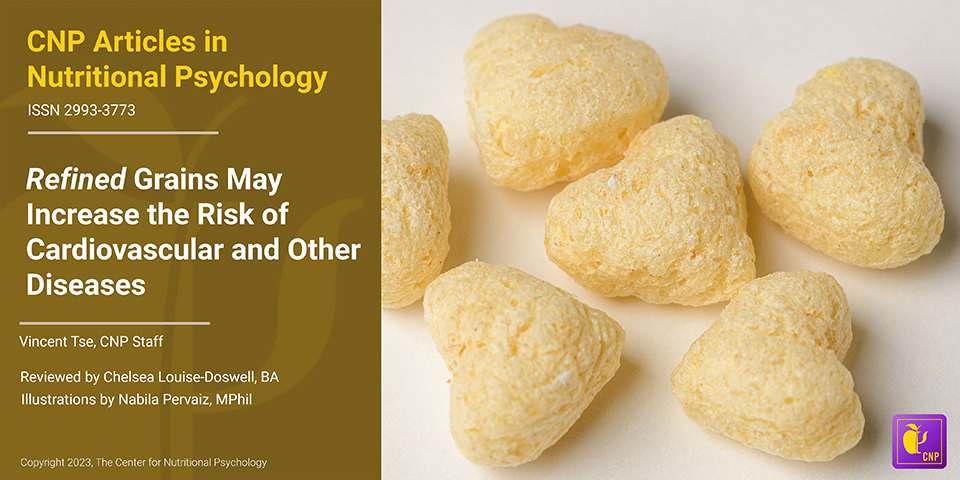Editor’s Note: The study of nutritional psychology (NP) involves exploring the influence of diet on psychological, cognitive, behavioral, perceptual, interoceptive, and psychosocial functioning and mental health. It also includes the reverse —which is exploring how our psychological, behavioral, and psychosocial states and mental health influence our dietary intake.
In fact, the study of NP involves exploring and asking questions about the many aspects of the diet-mental health relationship (DMHR). For example, how does our dietary intake pattern affect how we perform tasks? (aka the “Diet-Performance Relationship”). And, how does the look or smell of food (food aesthetic qualities) influence our desire to eat it? (i.e., the “Diet-Sensory-Perceptual Relationship”).
In this CNP Article, we explore how our environment influences our eating. In particular, we learn about how the aesthetics of an environment can influence our perception and desire to eat the food served in the environment. In nutritional psychology, we call this the Diet-Environment Relationship—the ‘DER.’
Introduction
Although food trucks or “dives” often serve great food that can rival good restaurants in taste, the environment in which foods are consumed can affect people’s perceptions of the food. In this study by Wu et al. (2022), two experiments conducted in China reported that food served in an aesthetically pleasing environment was found to smell better, taste better, and look better than in a less aesthetically pleasing environment. One experiment reported these results using photographs of places and foods, and another confirmed them with actual food. Participants found food they consumed in a nicely decorated room better smelling and tasting than in a less aesthetically pleasing room. They also expressed a greater desire to eat again in a nicer environment (Wu et al., 2022). The study was published in Appetite.
Participants found the food they consumed in a nicely decorated room better smelling and tasting than in a less aesthetically pleasing room.
Food is much more than a collection of nutrients
Humans need food to survive. Food provides human bodies with the energy needed to carry out various functions, such as breathing, circulating blood, and maintaining body temperature. Food is also a source of essential nutrients, such as vitamins and minerals, that our bodies need to function properly.
Food is much more than a collection of nutrients.
However, the value of food does not stop there. Food also provides us with pleasure and enjoyment. Eating is often a social and cultural activity that brings people together and provides comfort and satisfaction. Sharing meals with family and friends is a common way to strengthen relationships and build connections with others.
This sharing of meals with others is a focal point of various cultural customs worldwide. Dining rooms in people’s homes, restaurants, taverns, cafeterias, diners, barbecue parties, and other similar dedicated places and types of social events exist because food consumption and meal sharing are central parts of human culture. Their value goes far beyond the nutritional function of food.
Even in activities like space exploration missions, researchers soon realized that providing nutritious food is not enough and that food must also provide psychosocial comfort. “Ideal food cannot ensure psychosocial comfort, while a grandma-style pie can,” experts in the area wrote (Bychkov et al., 2021).
“Ideal food cannot ensure psychosocial comfort, while a grandma-style pie can,” experts in the area wrote (Bychkov et al., 2021).
The importance of beauty and aesthetics
Beauty and aesthetics, in general, are important to us. We are naturally drawn to things that are visually appealing or pleasing to our senses, and experiencing beauty can give us a sense of pleasure, satisfaction, and joy. This can help reduce stress and anxiety, improve our mood, and enhance our overall well-being.
For example, a recent study has shown that people become happier when they view beautiful images of nature, thus improving their subjective well-being (Xie et al., 2022). Another study has shown that women prefer more attractive men as long-term partners over men with favorable personal traits, despite consciously considering personal traits like ambition and intelligence more important for a partner to have (Li et al., 2023).
Aesthetic preferences (i.e., what one considers beautiful) are so important to us that individuals consider them part of their personal identity. A recent study has shown that when a person’s aesthetic preferences, such as preferences for music or art, change, that person tends to consider that his/her entire identity has changed. Researchers are now talking about an aesthetic self, an aspect of the human person that they believe to be at least as important for our identity as our moral values are (Fingerhut et al., 2021).
Researchers are now talking about an aesthetic self, an aspect of the human person that they believe to be at least as important for our identity as our moral values are.
The current study
Study author Chenjing Wu from the South China Normal University and her colleagues wanted to know whether the beauty of the environment affects the perception of the food we eat. They notice that, in everyday life, people often choose restaurants because of how they look, i.e., because they like the restaurant environment despite there being restaurants with tastier food. The reverse is also the case in that people can avoid particularly bad-looking restaurants even when such restaurants serve tasty food.
People often choose restaurants because of how they look, i.e., because they like the restaurant environment despite there being restaurants with tastier food.
It is well-known that individuals use data about their environment to form judgments. For example, studies have shown that the smell of the environment, lighting, and color affect the perception of food. When identical food is served in different places (e.g., laboratory, restaurant, cafeteria), perception of that food can vary across different places. In a well-known study, researchers served the same food to participants in different settings, ranging from 4-star restaurants to an army training camp and a freshman’s buffet. They found that food received much better evaluation when served in 4-star restaurants than in an army training camp or a freshman’s buffet (Edwards et al., 2003).
The smell of the environment, lighting, and color affect the perception of food.
Procedure Experiment 1
Participants in the first experiment were 132 college students who were divided into two groups. One group was shown a picture of the interior of a nice-looking restaurant (high aesthetic value condition). In contrast, the other was shown a picture of the interior of a poor-looking restaurant (low aesthetic value condition). They were asked to imagine being in that place and rate their emotions about it on a scale from negative to positive, as shown in Figure 1.
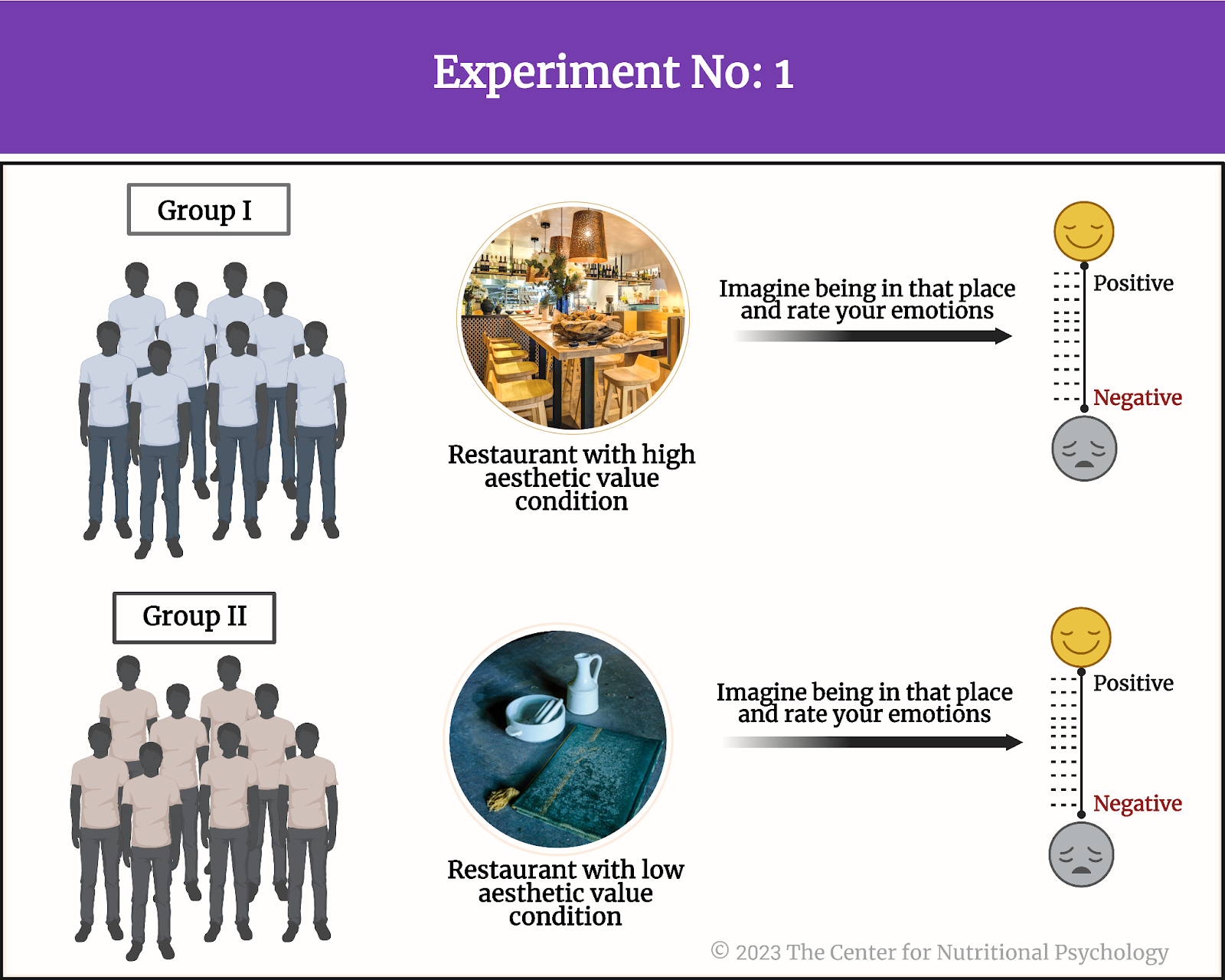 Figure 1. Experiment 1
Figure 1. Experiment 1
Participants were then shown pictures of 29 different foods. They were asked to rate the beauty of the food based on its looks, expected smell, and expected taste. The task was in Chinese, in which sentence constructions with the word beautiful typically describe both look, smell, and taste. So, although the request looks unusual in English, it was appropriate in the Chinese language. Participants were also asked to rate the desire to eat that food item and to evaluate the aesthetic value of the environment.
Researchers ran one more variant of this experiment on another group of 149 students. In this variant, instead of pictures of restaurant interiors, one group of participants was shown a picture of a beautiful natural landscape (high aesthetic value condition). At the same time, the other viewed a picture of the interior of a ruined building (low aesthetic value condition) (see Figure 2).
sintomasdelsida.org style=”text-align: center;”> 
Figure 2. Natural landscape (high aesthetic value) vs. ruined building (low aesthetic value)(not the actual pictures used in the experiment)
Experiment 2
Researchers ran the second experiment with real environments and a real food item. The participants were 81 college students. Researchers decorated a table in their laboratory with covers and flowers for a high aesthetic environment. The low aesthetic environment was the same laboratory table without decorations.
Participants entered the laboratory with a decorated or undecorated table in it, depending on the group they were assigned to. They were then asked to report their emotions about the environment, as in experiment 1. Before entering the laboratory, all participants rated their hunger (see Figure 3).
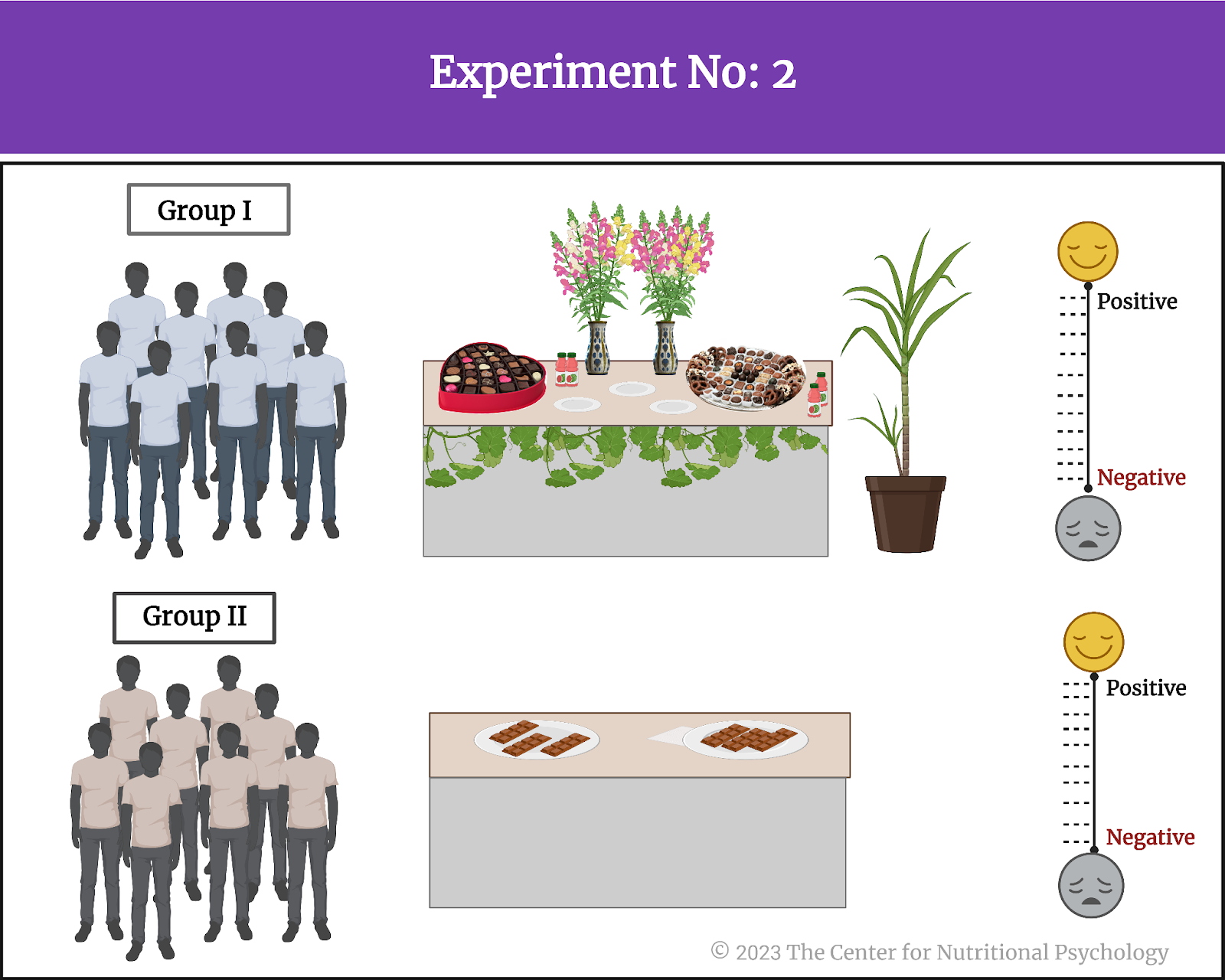 Figure 3. Experiment 2
Figure 3. Experiment 2
They were then set at the table and given a wrapped bar of dark chocolate. Participants first rated the look of the wrapped chocolate bar, its smell, and how much they would like to eat it. They were then instructed to eat the chocolate. Afterward, they rated how tasty it was and how much they would like to eat another one. Finally, they rated the aesthetic value of their environment (a laboratory with a decorated table or a laboratory without decorations).
The food looked better and was expected to smell and taste better in more beautiful environments
In experiment 1, participants who viewed pictures of a more beautiful environment and imagined themselves in it rated the food they saw in the pictures as better looking. They also reported expecting the food to smell and taste better on average compared to the group that evaluated the same food after viewing a less beautiful environment. On average, participants who imagined the more beautiful environment reported a greater desire to eat the food they were presented with.
Participants who imagined the more beautiful environment reported a greater desire to eat the food they were presented with.
The differences in how presented food items were rated were much greater in the second variant of the experiment (a beautiful natural landscape vs. a ruined building) than in the first variant of the experiment (two restaurants, of which one is nicer looking).
Participants who viewed a more beautiful environment also reported feeling better and rated that environment as more aesthetically pleasing. This confirmed the researchers’ expectations about how participants would perceive the environments.
The better the person feels, the better smelling and tasting the food is
In experiment 2, participants from the two groups rated the wrapped chocolate bar as looking equally nice. However, participants who inspected the chocolate bar while sitting at the decorated laboratory table (high aesthetics environment) tended to report that it smelled better than those who were inspecting it while sitting at an undecorated table. Participants sitting at a decorated table also reported a greater desire to eat it.
After eating the chocolate bar, participants from the high aesthetics condition group (i.e., sitting at the decorated table) tended to rate its taste better than participants from the other group. They also expressed a greater desire to eat another chocolate bar.
Differences in ratings provided by the two groups were similar in size to those obtained in the first experiment (two imagined restaurants and imagined food). However, it should be considered that a decorated table in a laboratory is still visibly a table in a laboratory. Hence, the differences between the two environments in experiment 2 were limited.
Further analysis revealed a clear association between the participant’s emotions and the food evaluation. Participants who reported more positive emotions about the environment tended to evaluate the food they were presented with (or asked to imagine) as looking, tasting, and smelling better. They also tended to report a greater desire to eat the food.
Participants who reported more positive emotions about the environment tended to evaluate the food they were presented with as looking, tasting, and smelling better.
Conclusion
The study showed that the aesthetic value of the environment affects the perception of food. Food is perceived as tastier, better smelling, and, in certain conditions, better looking in more aesthetically pleasing environments that elicit more positive emotions. The desire to eat the food is also greater in a better-smelling environment. This refers to the desire to eat the food at hand again in the same environment.
The implications of the findings are quite straightforward – food offered and sold in more aesthetically pleasing environments will be perceived as better by the consumers. They will also have a greater desire to eat it. The findings imply that restaurant managers should pay great attention to the aesthetic qualities of their customers’ environment, not solely to food preparation.
The paper “Does a beautiful environment make food better – The effect of environmental aesthetics on food perception and eating intention” was authored by Chenjing Wu, Hongyan Zhu, Chuangbing Huang, Xiaoling Liang, Kaili Zhao, Siyue Zhang, Mingcheng He, Wei Zhang, and Xianyou He.
More evidence-based information on the Diet-Environment Relationship can be found in the Nutritional Psychology Research Library (NPRL). The Diet and Sensory Perceptual Relationship (DSPR) included within nutritional psychology also involves studies in this area.
References
Bychkov, A., Reshetnikova, P., Bychkova, E., Podgorbunskikh, E., & Koptev, V. (2021). The current state and future trends of space nutrition from a perspective of astronauts’ physiology. International Journal of Gastronomy and Food Science, 24, 100324. https://doi.org/10.1016/J.IJGFS.2021.100324
Edwards, J. S. A., Meiselman, H. L., Edwards, A., & Lesher, L. (2003). The influence of eating location on the acceptability of identically prepared foods. Food Quality and Preference, 14(8), 647–652. https://doi.org/10.1016/S0950-3293(02)00189-1
Fingerhut, J., Gomez-Lavin, J., Winklmayr, C., & Prinz, J. J. (2021). The Aesthetic Self. The Importance of Aesthetic Taste in Music and Art for Our Perceived Identity. Frontiers in Psychology, 11, 1–18. https://doi.org/10.3389/FPSYG.2020.577703
Li, W., Zhu, H., Zhao, K., Zhu, H., Wang, X., & He, X. (2023). Good performance-high attractiveness effect: an empirical study on the association between athletes’ rankings and their facial attractiveness. International Journal of Sport and Exercise Psychology. https://doi.org/10.1080/1612197X.2023.2181846
Wu, C., Zhu, H., Huang, C., Liang, X., Zhao, K., Zhang, S., He, M., Zhang, W., & He, X. (2022). Does a beautiful environment make food better – The effect of environmental aesthetics on food perception and eating intention. Appetite, 175(April), 106076. https://doi.org/10.1016/j.appet.2022.106076
Xie, R., Qiu, C., & Qiu, G. (2022). Finding Beautiful and Happy Images for Mental Health and Well-Being Applications. Lecture Notes in Computer Science, 13536 LNCS, 704–717. https://doi.org/10.1007/978-3-031-18913-5_54


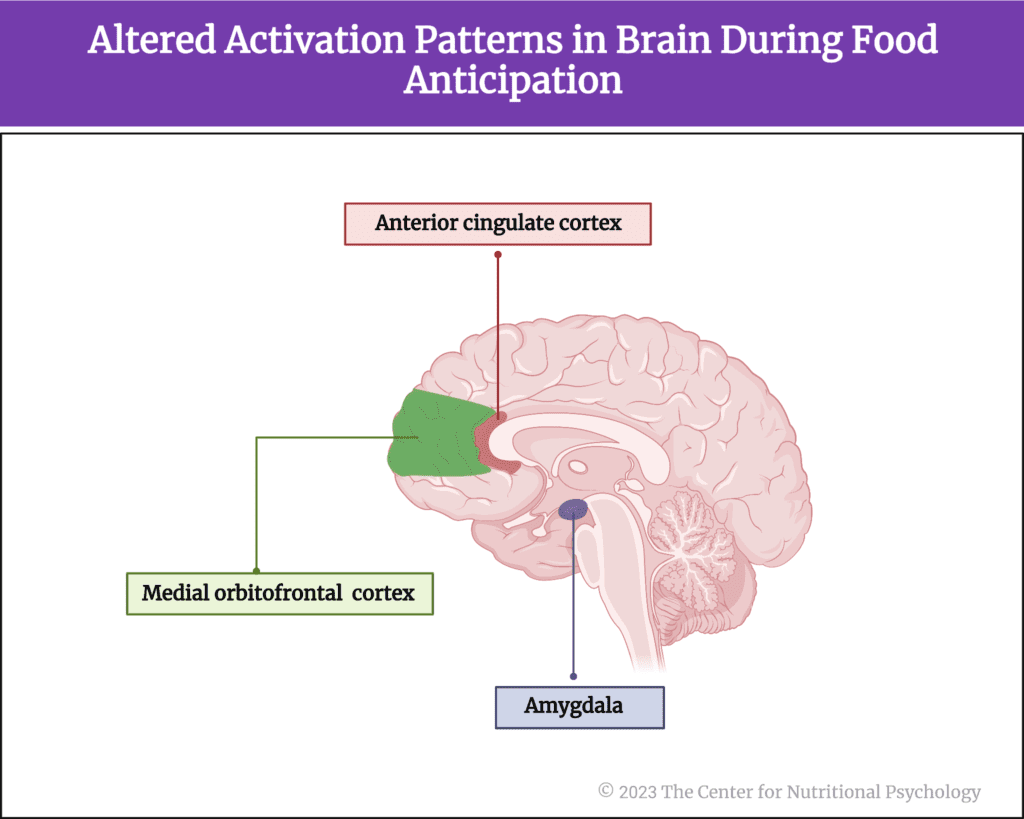
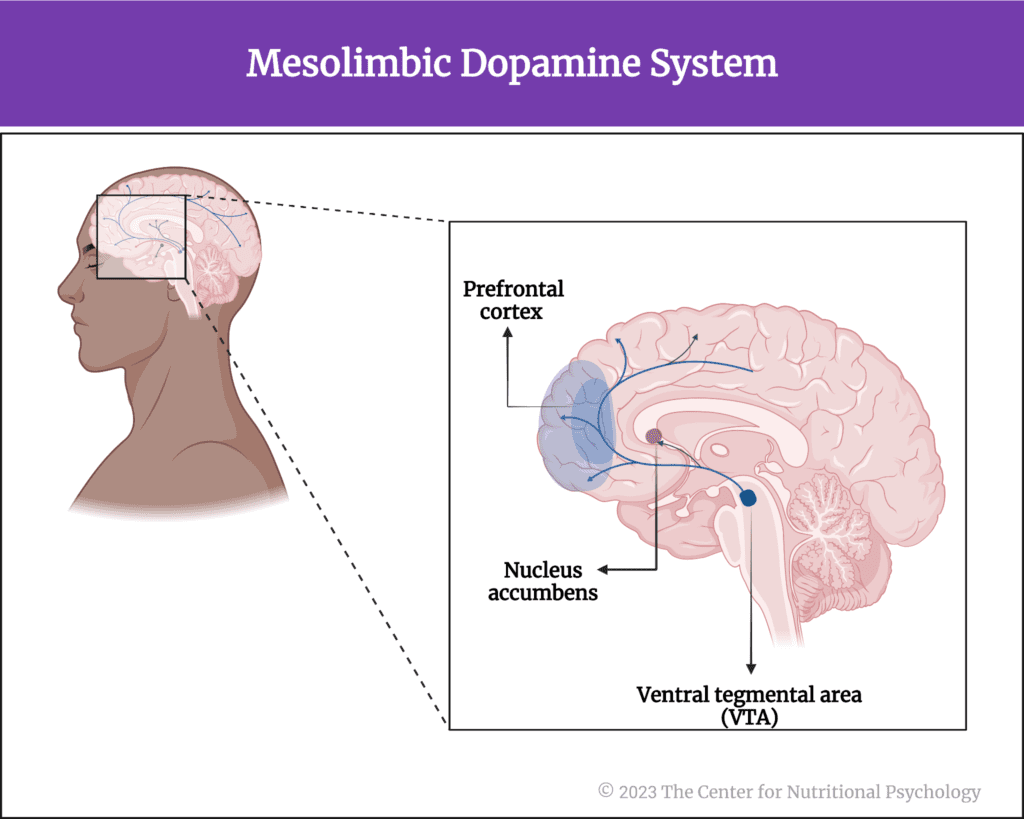

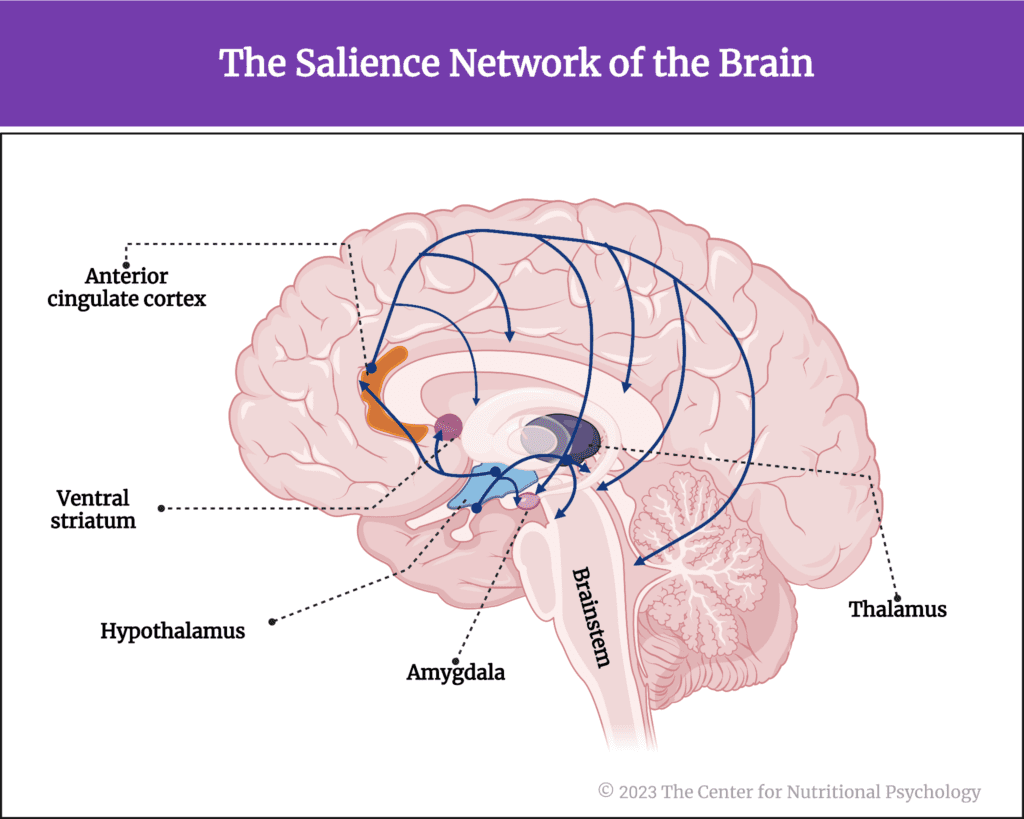
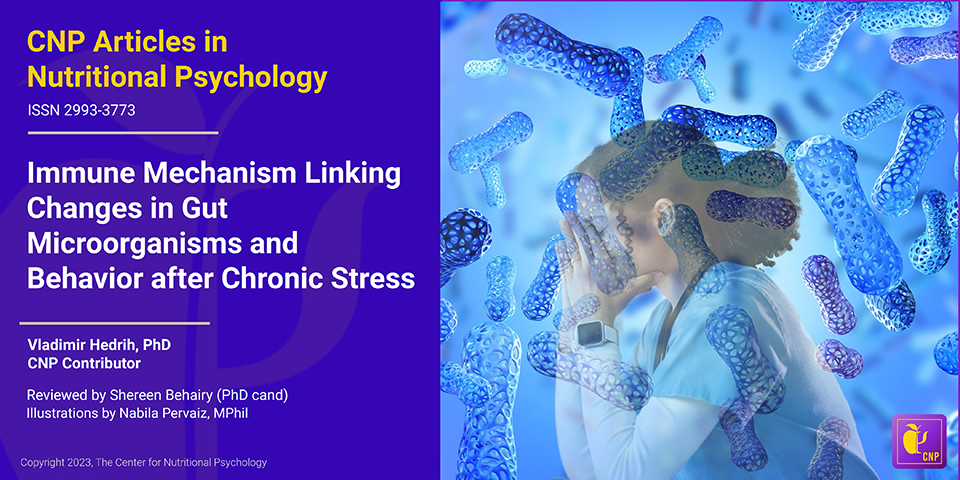



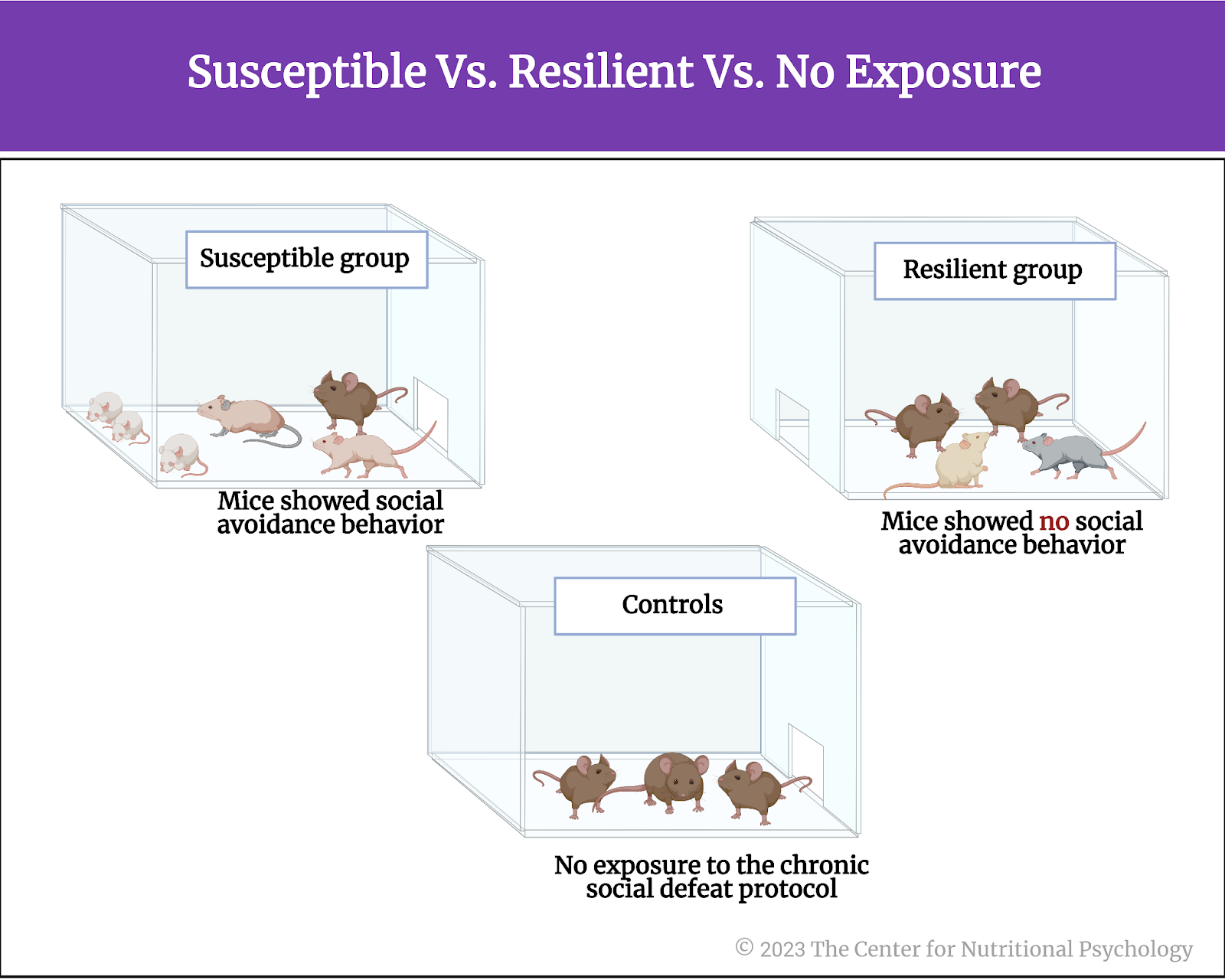
 Figure 5. Humans + Mouse experiment showing a lower abundance of lactobacillus in gut bacteria = with higher depression and anxiety
Figure 5. Humans + Mouse experiment showing a lower abundance of lactobacillus in gut bacteria = with higher depression and anxiety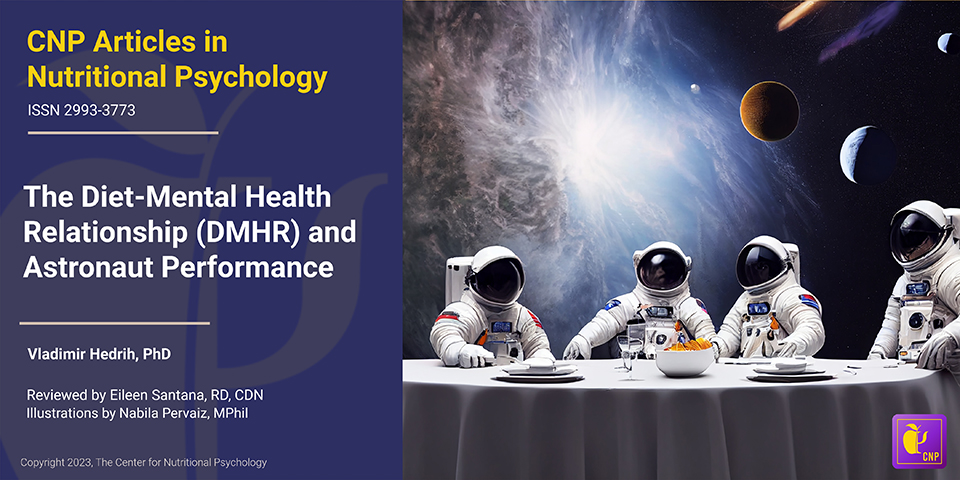
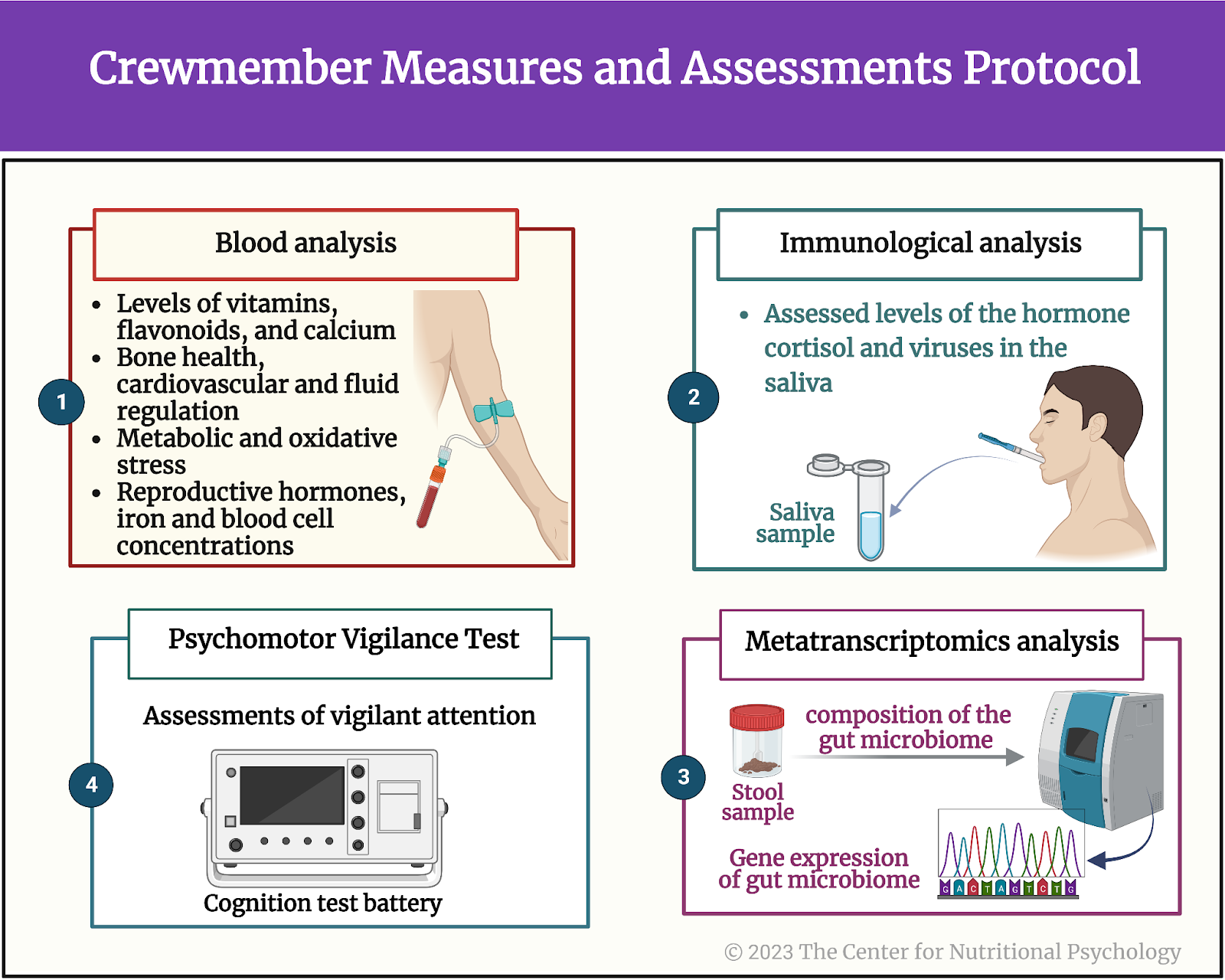


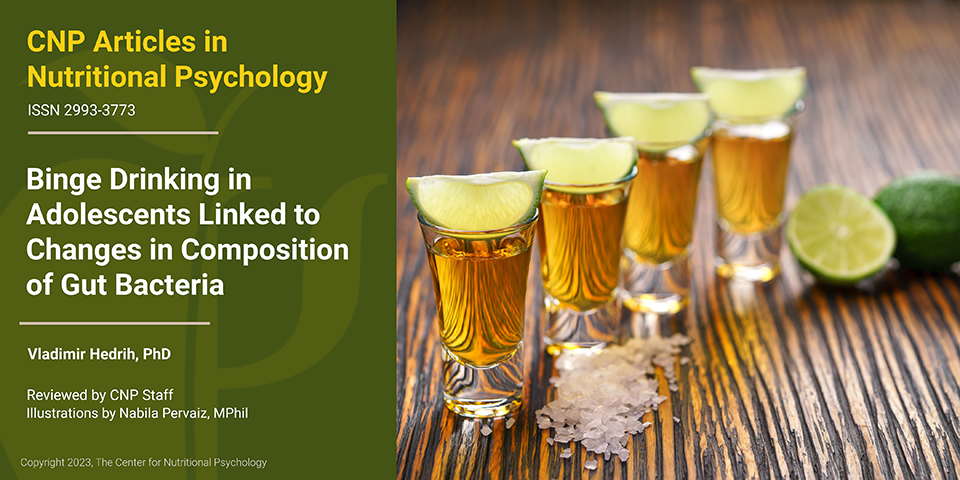





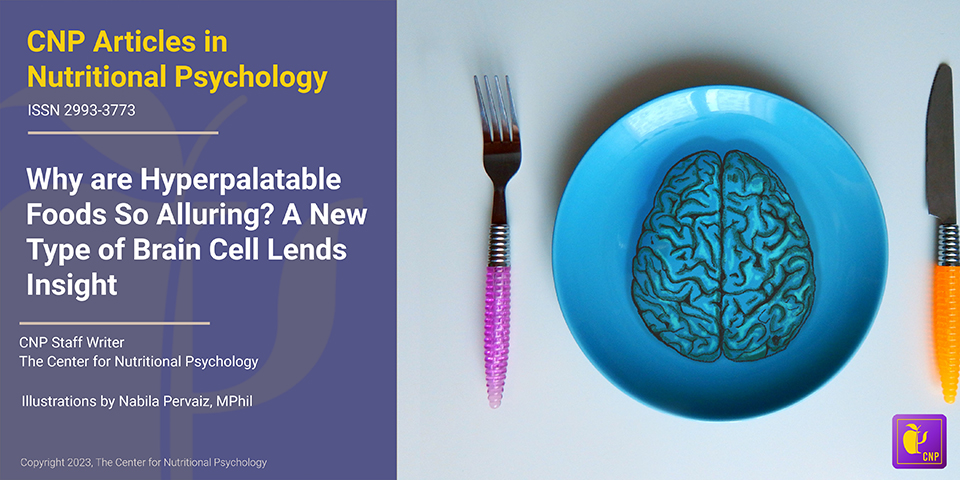
 Figure 1. Summary of how neurotensin neurons can affect our food behavior
Figure 1. Summary of how neurotensin neurons can affect our food behavior






